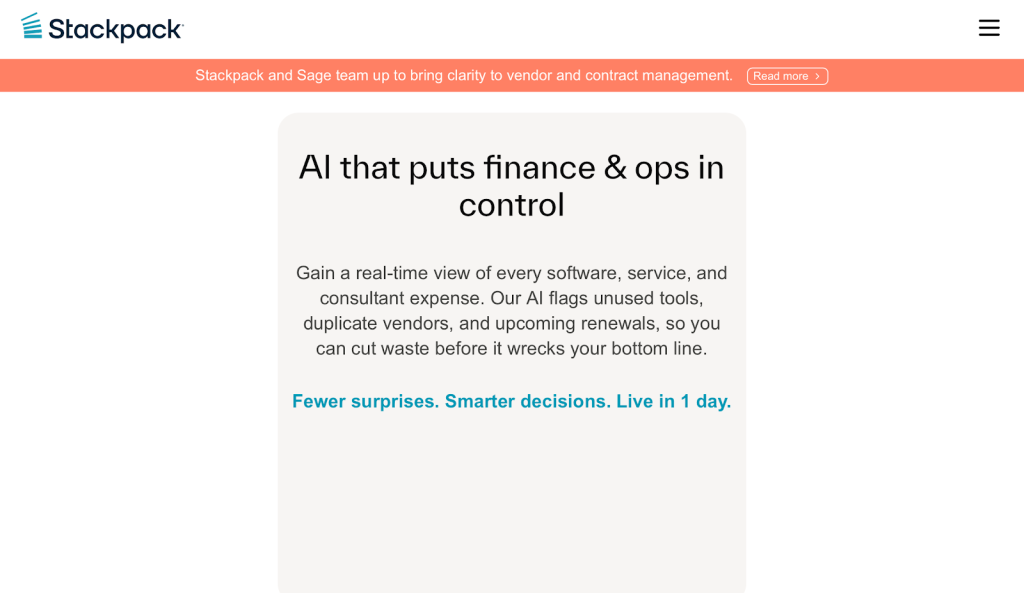
Stackpack, a fast-growing startup building powerful developer infrastructure tools, has successfully raised $6.3 million in funding to further accelerate product development and expand its reach in the software engineering space. The round, led by an impressive roster of investors, marks a major milestone in the company’s journey to simplify and modernize the way developers ship software.
Backed by a Powerhouse Lineup of Investors
The $6.3M round saw participation from Freestyle Capital, Elefund, Upside Partnership, Nomad Ventures, Layout Ventures, MSIV Fund, and several notable angel investors. The round is a strong vote of confidence in Stackpack’s mission and its leadership, particularly CEO Sara Wyman, who has emerged as a formidable force in the infrastructure-as-a-service (IaaS) space.
Each investor brings not only capital but also deep strategic value. Freestyle Capital and Elefund are known for backing high-impact SaaS platforms, while Upside Partnership and Nomad Ventures specialize in scaling infrastructure-heavy startups from early traction to industry adoption.
What Stackpack Offers Developers
Stackpack is building developer tools designed to take the pain out of managing infrastructure. With cloud-native apps becoming more complex, engineering teams are under growing pressure to balance speed and stability while deploying scalable systems. Stackpack provides a suite of infrastructure automation tools that help engineers provision, monitor, and manage systems with minimal manual effort.
Its core platform focuses on:
- Automated Infrastructure Provisioning
- Deployment Orchestration
- Built-in Observability & Alerting
- Cloud Environment Reconciliation
What makes Stackpack stand out is its developer-first design philosophy. Unlike traditional DevOps tools that can be difficult to configure and maintain, Stackpack’s interface is intuitive, with deep integrations into CI/CD workflows, version control platforms, and cloud service providers.
Why It Matters Now
As organizations scale, infrastructure complexity becomes a bottleneck. Teams often patch together tools that don’t natively speak to each other - resulting in tech debt, outages, and frustrated engineers. Stackpack aims to unify these disconnected layers into a seamless experience, empowering teams to focus on shipping code, not maintaining infrastructure.
Here’s what many founders overlook: Developer experience (DX) is no longer just an internal issue - it’s a competitive advantage. The companies that retain top engineering talent are the ones investing in intuitive, powerful tooling. Stackpack sits right at the heart of this shift, offering startups and mid-sized companies the same robust, scalable infrastructure tooling that FAANG companies build in-house.
The real insight here? Founders who invest early in developer infrastructure not only reduce future engineering costs - they de-risk their product roadmap by minimizing downtime and deployment issues. Stackpack’s tools turn infrastructure into a catalyst for growth, not a source of friction.
Riding the Wave of the IaaS Boom
The infrastructure-as-a-service market is exploding, driven by trends like serverless computing, hybrid cloud adoption, and the push for continuous delivery. According to Grand View Research, the global IaaS market size was valued at $59.1 billion in 2022 and is projected to expand at a CAGR of 23.2% from 2023 to 2030.
As cloud-native architecture becomes standard and businesses prioritize automation, the need for tools like Stackpack will only intensify. Engineering teams are tired of wrangling complex cloud configs and YAML files. They want fast, reliable, and secure infrastructure solutions that "just work" - and Stackpack is positioning itself to be the go-to platform.
On top of that, DevOps adoption has surged, with a recent report from GitLab revealing that over 70% of companies now release code multiple times per day, compared to just 35% five years ago. This rapid cadence makes it critical for engineering teams to use tools that provide speed without sacrificing stability.
In this environment, Stackpack’s offering is more relevant than ever. By combining powerful orchestration, intuitive UI, and extensible APIs, the platform is poised to become a foundational layer in the modern software delivery stack.
Sara Wyman: Leading with Vision and Precision
At the helm of Stackpack is Sara Wyman, whose background in enterprise DevOps and passion for developer efficiency have helped shape the startup's unique perspective. Under her leadership, the company has quickly built a reputation for being not only technically solid but refreshingly opinionated in how it approaches modern infrastructure challenges.
Wyman’s focus isn’t just on features - it’s on developer empowerment. In an increasingly crowded market, Stackpack’s success stems from understanding real-world engineering pain points and designing tools that feel invisible until you need them - and powerful when you do.
What’s Next for Stackpack
With fresh capital secured, Stackpack plans to:
- Scale its engineering and customer success teams
- Launch new integrations with Kubernetes, Terraform, and major cloud providers
- Expand go-to-market efforts targeting mid-market and enterprise customers
- Double down on security and compliance features to serve regulated industries
Expect more product launches, open-source contributions, and deep ecosystem partnerships in the months ahead. For developers and teams looking for modern infrastructure without the hassle, Stackpack might just be the toolkit they’ve been waiting for.









